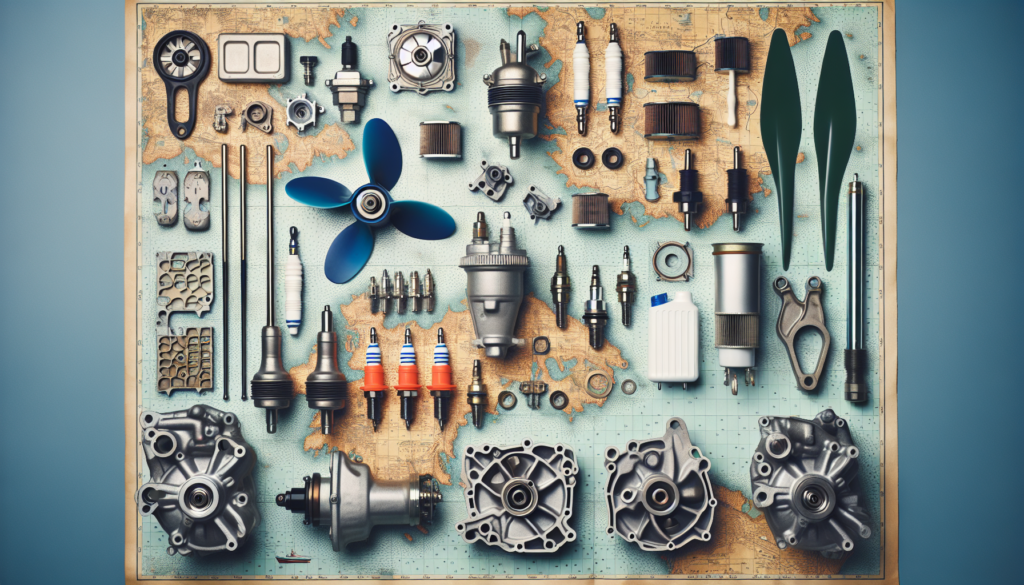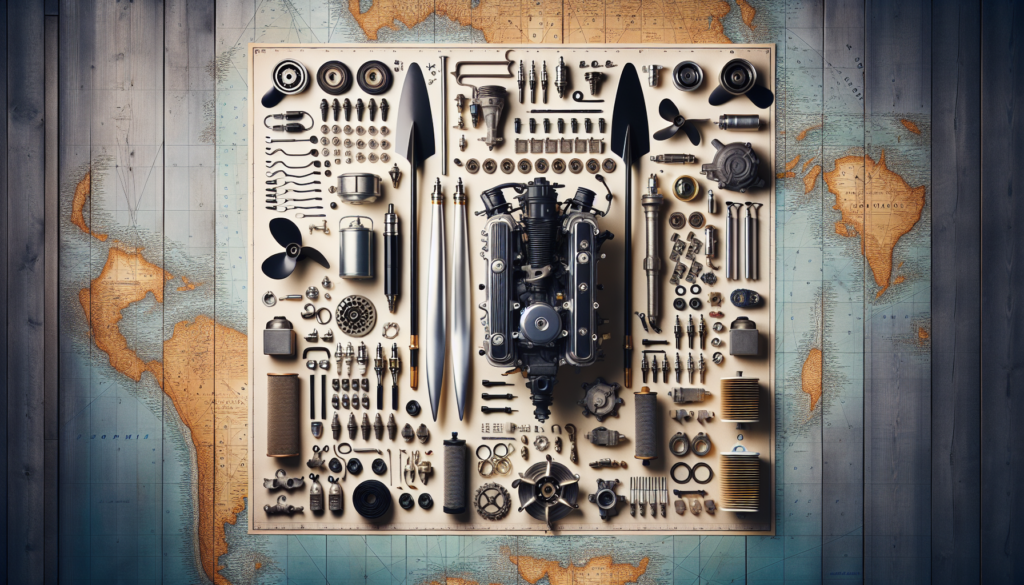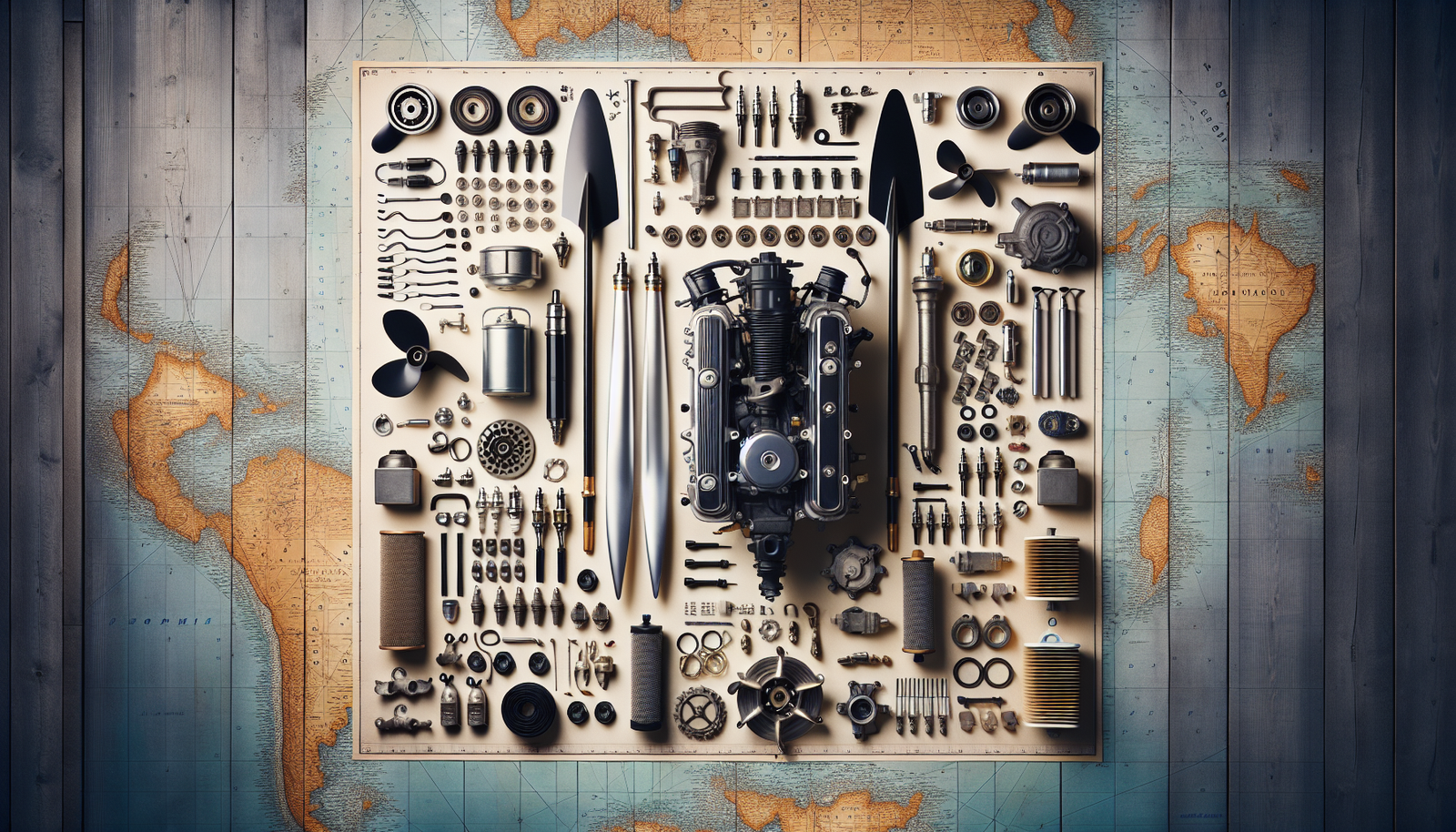Embarking on a journey towards boat engine repair can seem like a daunting task. But don’t worry, you’re not alone! In the “Buying Guide for Boat Engine Repair Parts,” we aim to simplify this process for you. Here, we’ll guide you in understanding the various intricacies involved when purchasing boat engine repair parts. From knowing what to look for, where to source your parts, how much to budget for, and even how to avoid common pitfalls, everything you need to start your journey towards savvy boat maintenance is within your reach.

Understanding the Different Types of Boat Engines
When it comes to boats, the engine is key. Just as with cars, there are various types of boat engines. Each type works a bit differently, so let’s delve into each one in more detail.
Outboard Engines
Outboard engines are a popular choice for many boaters. These engines are mounted outside the hull of the boat, hence the name “outboard”. They are known for their ease of installation and maintenance. The propeller and gearbox are attached to the engine, making it easy to lift out of the water when the boat is docked. Outboard engines are versatile and can be used in both freshwater and saltwater environments.
Inboard Motors
Unlike outboard engines, inboard motors are mounted inside the boat’s hull. The engine drives a shaft that passes through the bottom of the boat to a propeller, which drives the boat forward. Because the weight of the engine is in the center, inboard motors tend to offer more stability. They’re usually found in larger boats and yachts as they provide more power and require less space compared to outboards.
Sterndrive Engines
A sterndrive engine, or inboard/outboard engine (I/O), is a bit of a hybrid between an outboard engine and an inboard motor. The engine is placed inside the boat, and the drive unit is outside. This type lets you enjoy the best of both worlds: the power of an inboard motor and the agility of an outboard engine.
Jet Drives
Jet drives are less commonly used but offer a unique propelling system. Instead of using a propeller, they use a jet of water for propulsion. This type of engine sucks in water and then expels it, causing the boat to move. They are most commonly used in personal watercraft.
Essential Boat Engine Components
Like any engine, boat engines consist of an array of components that all work together to make your boat move. Here are the essential parts you should know about:
Engine Block
The engine block is the core of the engine. It’s the large, cumbersome part that houses most of the internal parts, like the cylinders and pistons.
Cylinder Head
The cylinder head is attached to the top of the engine block. It seals the top of the cylinders, forming the combustion chamber. This part is crucial for controlling air and fuel mixture intake and exhaust gas release.
Pistons
Inside the cylinders within the engine block are the pistons. These move up and down, reacting to the explosion of the fuel in the combustion chamber. This movement is then transferred to the crankshaft and eventually turns the propeller.
Connecting Rods
These rods connect the pistons to the crankshaft. As the pistons move up and down, the connecting rods enable the transference of this motion into a rotational one that can turn the crankshaft.
Crankshaft
The crankshaft takes the up-and-down movement of the pistons and turns it into a rotation that moves the propeller and subsequently, the boat.
Camshaft
The camshaft is designed to control the opening and closing of the intake and exhaust valves in the cylinder head. It plays a decisive role in determining how the engine performs.
Pre-purchase Considerations
Before buying boat engine parts, there are several factors you should consider.
Type of Boat Engine Model
It’s crucial to know what type of engine you have. As you know now, there are several different kinds, and each requires different parts. Ensure you’re buying parts that are compatible with your engine model.
Part Availability
The availability of parts is also a crucial consideration. Some parts for older or less common engines may be harder to find. In contrast, parts for more common, modern engines will likely be easier to source.
Cost of Parts
Just as with anything else, the cost is a significant factor. The price can vary widely based on the type of part, quality, and where you buy it from. It’s important to balance cost with quality – cheaper isn’t always better.
Quality Factor
While cost is important, so is quality. Prioritize parts made from high-quality, durable materials. Remember, the engine is the heart of your boat, and using sub-par parts can lead to poor performance or damages.
Manufacturer’s Reputation
The reputation of the manufacturer is also important. Stick to well-known, reputable brands. To gauge a manufacturer’s reputation, you can look at online reviews or ask for recommendations from other boaters.

Purchasing New vs. Used Boat Engine Parts
Aside from deciding on which part you need, you have to decide whether you want it new or used.
Pros and Cons of New Parts
New parts are typically more reliable than used ones. They come with a guarantee of quality and often a warranty. The downside is that new parts tend to be more expensive.
Benefits and Risks of Used Parts
Used parts are usually much cheaper than new ones. They’re a good option if you’re on a tight budget. However, they can be a bit of a gamble. Unless you know the part’s history, it’s hard to know the condition of the part, and it may not last as long.
Determining Part Condition
Before buying used parts, inspect them for signs of wear and damage. Ask the seller about the part’s history and why it’s being sold.
Validity of Warranties
If the part comes with a warranty, double-check the terms. Make sure you understand what’s covered, the duration of the coverage, and the claim process.
Deciphering Boat Engine Part Specifications
When you’re browsing for boat engine parts, you’ll probably come across these key specifications.
OEM Number
The Original Equipment Manufacturer (OEM) number is a unique number assigned to each part by the manufacturer. It’s a reliable way to ensure you get the exact part you need.
Part Description
The description provides details about the part. It might include information about what it does, its size, and the materials it’s made from.
Model Compatibility
This shows which engine models the part can be used with. Always check the compatibility with your boat engine model before buying a part.
Physical Dimensions
This includes measurements like length, width, and weight. Make sure the dimensions align with the part you’re replacing.
Material Composition
The materials a part is made from can impact its performance and durability. Different materials can be better suited to different types of engines and uses.
Locating Reliable Boat Engine Part Suppliers
Next, you have to figure out where to buy the part. Here are some places you can look:
Online Marketplaces
Many boat engine parts can be found on general and specialized online marketplaces. Buying online allows you to easily compare options from different sellers.
Brand Direct Suppliers
Sometimes, it’s best to buy directly from the manufacturer. They can offer a broad selection of parts and you can be assured of their quality.
Marine Retailers
Marine retailers often have a range of engine parts. You can find both new and used parts, as well as expert advice from knowledgeable staff.
Tips for Verifying Supplier Reliability
When buying from a new supplier, it’s wise to do a bit of research. Look for reviews or testimonials from previous customers, and check they have a secure payment system.
Best Practices when Installing Boat Engine Parts
Once you’ve bought your parts, it’s time to install them.
Reading Installation Manuals
Before beginning any installation process, always read the manual or instructions that come with the part. It can prevent mistakes and ensure the piece is installed correctly.
Using Proper Tools
Use the right tools for the job. Incorrect or inappropriate equipment can lead to damage to the new part or your engine.
Observing Safety Precautions
Working with engines can be risky. Always observe safety precautions, like wearing protective gear and disconnecting power sources before starting work.
Hiring Professional Help if Necessary
If you’re unsure about any aspect of the installation process, it could be best to hire a professional. An incorrect installation can cause significant damage.
Maintaining your Boat Engine Parts
After installation, proper maintenance can help extend the lifespan of the part and your engine.
Routine Inspection
Regular inspections can help detect any potential issues early, before they become major problems. Look for signs of wear, damage, or abnormal operation.
Proper Cleaning
Keeping your engine and parts clean can prevent the buildup of dirt and corrosion. Always follow manufacturer recommendations for cleaning procedures and products.
Timely Replacement
Parts have a lifecycle. Don’t wait for a part to fail completely before replacing it. If it’s nearing the end of its life or showing signs of wear, it’s better to replace it sooner rather than later.
Implementing Protective Measures
Take steps to protect your engine and parts. This could include using engine covers and corrosion inhibitors, particularly during off-season storage.
Understanding Boat Engine Part Warranty Terms
As mentioned earlier, many new parts come with a warranty. Understanding the terms can help avoid confusion down the road.
Coverage Period
The coverage period refers to how long the warranty lasts. It can range from a few months to several years, depending on the part and manufacturer.
Warranty Limitations
Understand what limitations are involved with the warranty. This could include exclusions for certain types of damage or requirements for regular maintenance.
Claim Process
Familiarize yourself with the steps for making a warranty claim before you need to make one. This often involves returning the part for inspection or repair.
Transferability of Warranty
Some warranties can be transferred to a new owner if you sell the boat or engine part. This could increase the resale value of your boat.
Advancements in Boat Engine Parts Technology
The marine engine industry has experienced numerous advancements in recent years, improving both the performance and sustainability of boat engines.
Emergence of Environment-friendly Parts
Many manufacturers are now producing more environmentally friendly engine parts. This includes parts made from recyclable materials, as well as those designed for better fuel efficiency.
Rise of Smart Parts and Sensors
Smart technology is making its way into boat engines. This includes parts with built-in sensors that can help monitor the engine’s performance in real-time and detect potential issues early.
Improved Material Composition
Engine parts are now made from sturdier and more resilient materials. This has led to greater durability and efficiency, and a longer lifespan for parts.
Evolution in Design and Functionality
Boat engine parts have also evolved in terms of design. Improved designs have led to parts that are easier to install and maintain, and that operate more smoothly and efficiently.
In conclusion, understanding your boat’s engine part’s specifications, purchasing considerations, installation, and maintenance can dramatically improve your boat’s performance while saving on repair costs. Always consider the type of engine that you have, the quality of parts, and align this with the purpose of your boat to ensure smooth sailing.

